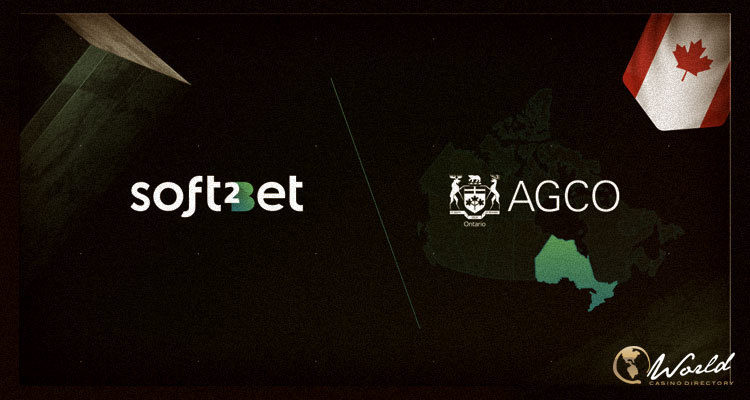
Retention Automation Tools: Boosting Customer Loyalty and Engagement
In today’s hyper-competitive market, businesses are increasingly recognizing the importance of retaining customers rather than solely acquiring new ones. This shift in focus has led to the development of various retention automation tools that help companies streamline their efforts in engaging customers effectively. One notable resource in this space is retention automation tools soft2bet-us.com, which offers insights into effective customer retention strategies. Understanding and implementing these tools can significantly boost customer loyalty and reduce churn, ultimately leading to a healthier bottom line for businesses.
What are Retention Automation Tools?
Retention automation tools are software solutions designed to help businesses manage and enhance their customer retention strategies. These tools typically include features such as automated email campaigns, customer segmentation, engagement tracking, and analytics. By leveraging automation, companies can personalize their interactions with customers, identify trends, and react proactively to potential churn risks. This not only saves time but also improves the efficiency of retention strategies.
The Importance of Customer Retention

Before diving deeper into retention automation tools, it’s crucial to understand why customer retention matters. Research shows that acquiring a new customer can cost five times more than retaining an existing one. Moreover, increasing customer retention rates by just 5% can boost profits by 25% to 95%. This demonstrates that focusing on retaining customers can have a substantial impact on profitability. Additionally, loyal customers are more likely to make repeat purchases, refer others, and provide valuable feedback that can help improve products or services.
Key Features of Retention Automation Tools
Retention automation tools often come with a range of features designed to enhance customer engagement and loyalty. Here are some common features to consider:
- Email Marketing Automation: Automatically send personalized emails to customers based on their preferences or behavior. This can include promotional offers, newsletters, or reminders.
- Customer Segmentation: Group customers based on specific criteria such as purchase history, demographics, or engagement levels. This enables tailored marketing strategies for different segments.
- Churn Prediction: Use predictive analytics to identify customers who are at risk of disengagement. This allows businesses to intervene with targeted campaigns to retain those customers.
- Feedback Collection: Implement tools to gather feedback from customers about their experiences. This can help identify pain points and areas for improvement.
- Analytics and Reporting: Monitor key metrics such as customer engagement rates, retention rates, and ROI from retention campaigns. This data can drive decision-making and strategy refinement.
Top Retention Automation Tools in the Market
There are numerous retention automation tools available today, each offering unique features and capabilities. Here are some of the top tools worth considering:
- HubSpot: HubSpot is an all-in-one marketing platform that includes features for email automation, CRM, customer feedback, and detailed analytics. Its customer relationship management tools can help businesses identify and engage with their most valuable customers.
- Intercom: Intercom specializes in customer messaging and engagement, offering tools for automated messaging, customer segmentation, and lifecycle tracking. Its chatbots and messaging features allow businesses to communicate with customers in real-time.
- ConvertKit: Focused on email marketing, ConvertKit offers automation features specifically designed for creators and small businesses. It allows users to segment their audience and send targeted email campaigns based on user behavior.
- ActiveCampaign: This tool combines email marketing, marketing automation, and CRM capabilities. ActiveCampaign offers advanced automation workflows, making it easy to engage customers at various stages of their journey.
- Retently: Retently focuses on gathering customer feedback and measuring Net Promoter Score (NPS). It helps businesses understand customer satisfaction and optimize their retention strategies based on the insights gathered.

Strategies for Leveraging Retention Automation Tools
To make the most of retention automation tools, businesses should adopt a strategic approach. Here are some effective strategies:
- Define Customer Personas: Understanding who your customers are is crucial. Develop detailed personas that outline their preferences, behaviors, and pain points. This will help tailor your retention strategies effectively.
- Set Clear Goals: Establish measurable objectives for your retention efforts. Whether it’s reducing churn by a certain percentage or increasing customer engagement levels, having clear goals will help track your success.
- Personalize Communication: Use the data provided by retention automation tools to create personalized customer experiences. Tailoring messages based on customer behavior and preferences can significantly enhance engagement.
- Monitor and Analyze: Regularly review the analytics provided by your retention tools. This data will help you identify what strategies are effective and where adjustments are needed. A/B testing can also help optimize campaigns.
- Engage Post-Purchase: Don’t wait until a customer shows signs of drifting away. Implement strategies to engage customers post-purchase, such as thank-you emails, follow-ups, and exclusive offers to encourage repeat business.
The Future of Retention Automation
As businesses continue to adapt to changing consumer behaviors and preferences, the future of retention automation tools looks bright. Emerging technologies such as artificial intelligence (AI) and machine learning are becoming integral to enhancing these tools, allowing for even more sophisticated customer interactions and tailored marketing strategies. Additionally, the rise of customer experience (CX) as a focal point for brands means that retention automation will likely continue evolving to meet these demands.
Conclusion
In conclusion, retention automation tools play a crucial role in helping businesses foster customer loyalty and engagement. By understanding the importance of retention, utilizing the right tools, and employing effective strategies, companies can significantly enhance their customer relationships and drive long-term profitability. As the market continues to evolve, embracing automation in retention efforts will be vital for staying ahead of the competition.

Comment (0)